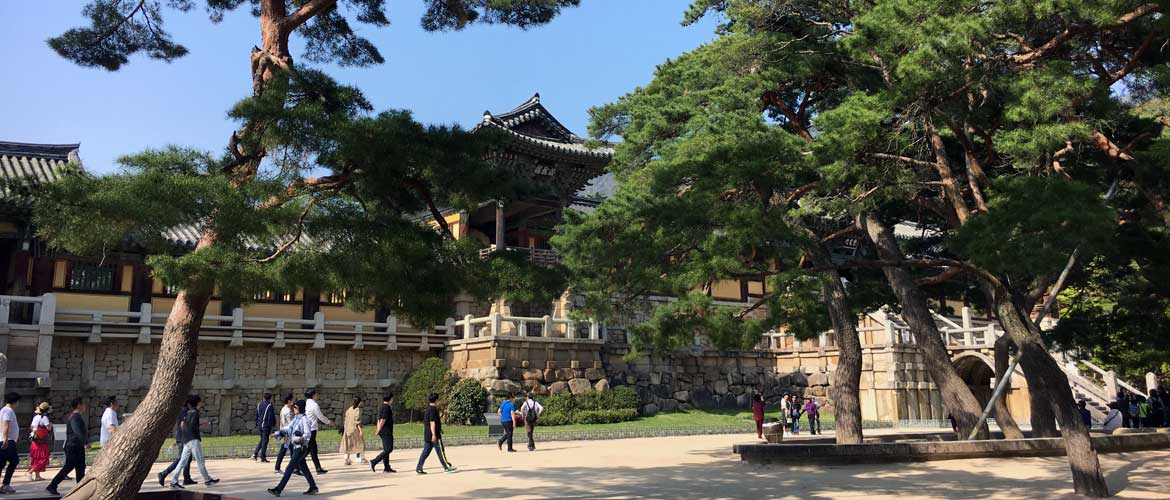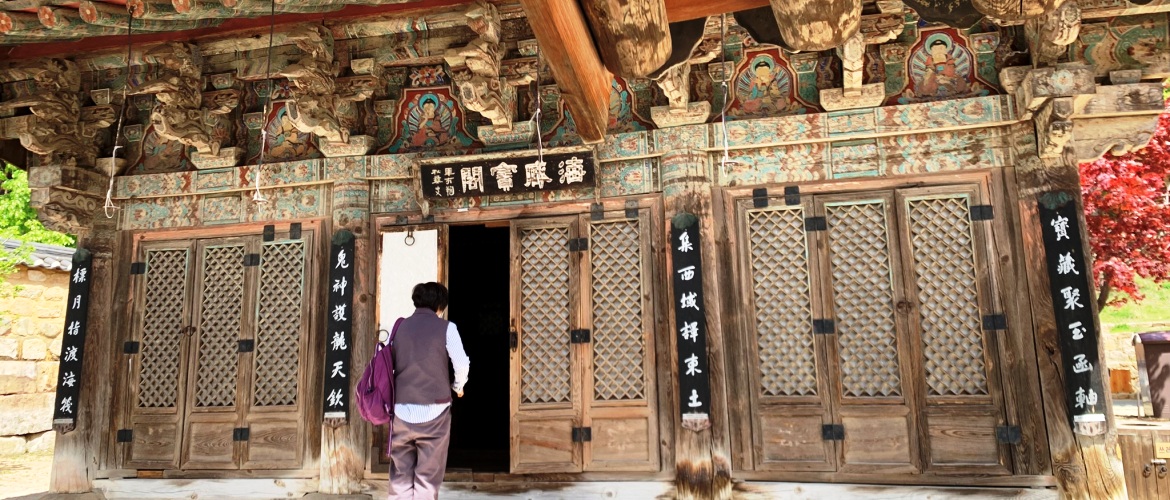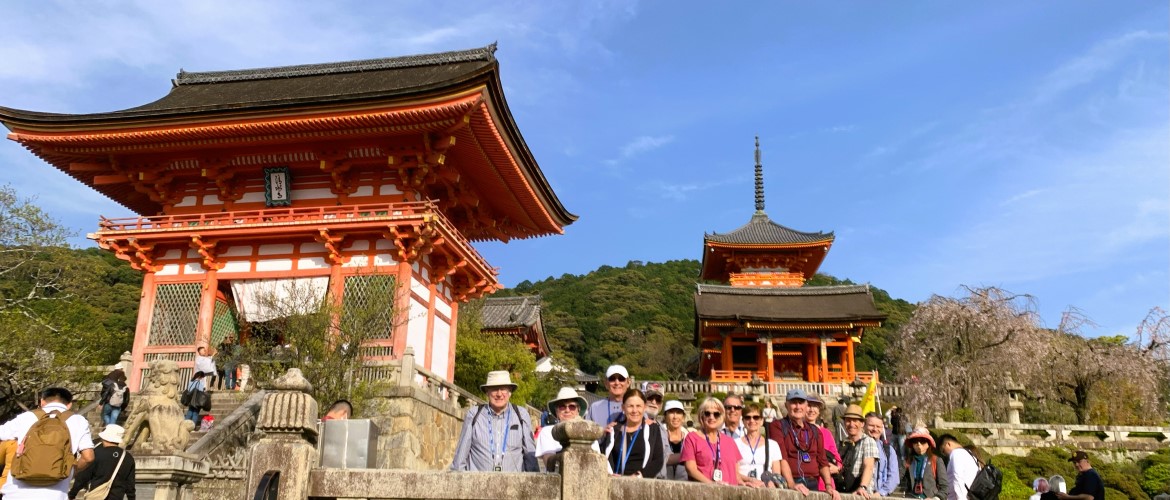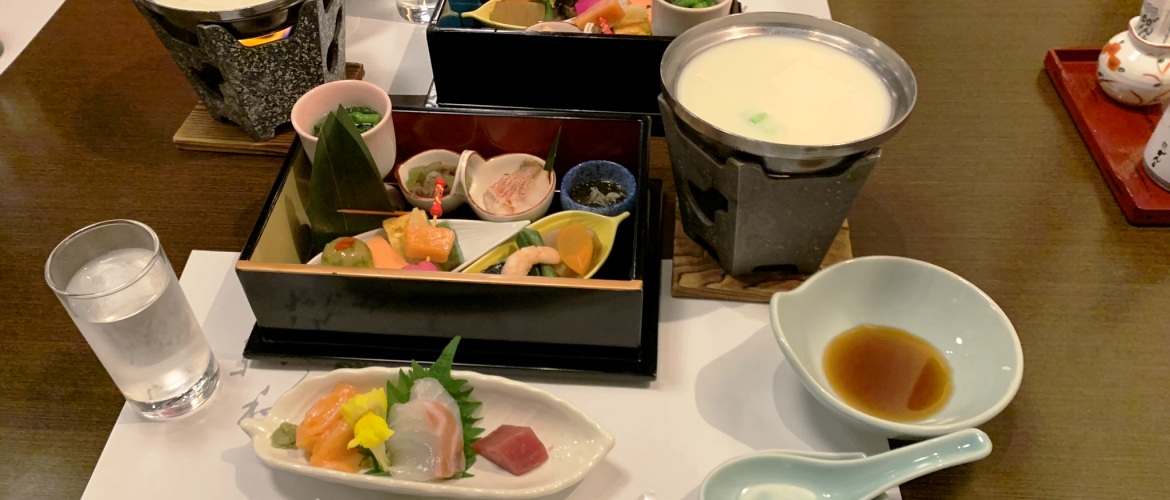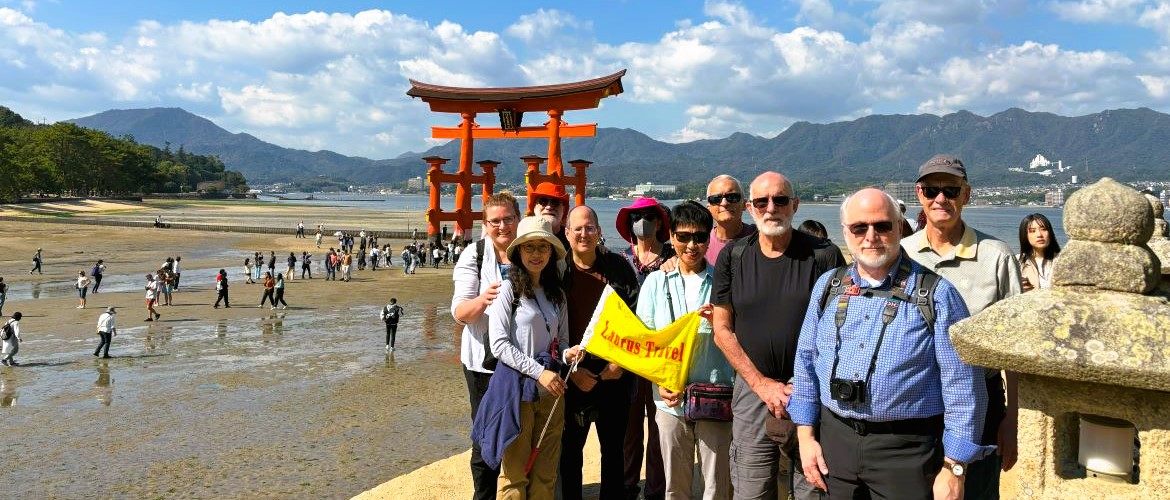Seoul – Gyeongju – Busan – Tokyo – Mt. Fuji – Hakone – Kanazawa – Takayama – Shirakawa-go – Kyoto – Nara – Osaka – Hiroshima – Miyajima – Tokyo
This meticulously crafted itinerary showcases the best of South Korea and Japan, two neighbours that have influenced each other in so many ways since time immemorial and yet still remain so distinct from each other. One of our most popular Asia tours, this extraordinary journey presents a perfect balance between the old and new giving the visitor a well-rounded introduction to two of Asia’s most successful modern economies rising out of the ashes of war and destruction.
Important Features
- Small group size (average 15, maximum 20)
- Expert professional guides
- Quality local and Western cuisines
- Korean BBQ welcome dinner in high-end restaurant
- Excursion to the Demilitarized Zone near Seoul
- Special dinner featuring geisha dancer (maiko) performance
Meal Code: B = breakfast / L = lunch / D = dinner
Day 1/Wed: Departing for Seoul
The journey begins with your international flight departing from a city of your choice. International airfare is not included but can be offered on request.
Day 2/Thu: Arrival in Seoul
Upon arrival, transfer to the centrally located hotel on your own, which can be easily done by taxi or airport limousine bus or airport express train.
The 50km cab ride from Incheon International Airport costs between 70,000 and 100,000 Korean Won ($56-$80 US) including expressway toll charge. The Airport Railroad Express train travel between the airport and Seoul Station and costs 9,000 Won ($7 US); from Seoul Station, taking a cab from Seoul Station to the hotel costs just a few dollars. The deluxe limousine bus costing 18,000 won ($14 US) may be an ideal choice depending on your flight schedule.
Day 3/Fri: Seoul (B/L/D)
Seoul, the capital of South Korea, is a huge metropolis where modern skyscrapers, high-tech subways and pop culture meet Buddhist temples, old palaces and street markets. Notable attractions include futuristic Dongdaemun Design Plaza, a convention hall with curving architecture and a rooftop park; Gyeongbokgung Palace, which once had more than 7,000 rooms; and Jogyesa Temple, site of ancient locust and pine trees.
Our sightseeing today includes Gyeongbokgung Palace, Bukchon Hanok Village (traditional residential area on top of a hill inside the city), National Museum of Korea, and the War Memorial of Korea.
Enjoy a sumptuous Korean barbecue dinner tonight.
Day 4/Sat: Seoul – DMZ – Seoul (B/L)
The morning excursion to the Demilitarized Zone (DMZ) is a key highlight of this tour. Dividing North Korea and South Korea, the DMZ is one of the last remnants of the Cold War. The DMZ runs across the Korean Peninsula and roughly follows the 38th parallel north (popular name given to latitude 38° N) on an angle, with the west end of the DMZ lying south of the parallel and the east end lying north of it. With over a million soldiers on watch each day, this stretch of land measuring 250 kilometres (160 miles) long and about 4 kilometres (2.5 miles) wide is the most fortified border in the world.
The afternoon is set aside for you to explore on your own. Feel free to ask the guide for recommendations.
Day 5/Sun: Seoul – Gyeongju – Busan (B/L)
The morning train ride to Gyeongju takes 2 hours (KTX #115, 08:00/10:07, 300 km).
Gyeongju was the capital of the 1,000-year-long Silla dynasty and is known for its extensive historical remains. Our sightseeing in Gyeongju begins at the 8th-century Bulguksa, a magnificent Buddhist temple complex featuring stone pagodas, a series of wooden buildings on raised stone terraces, and a large bronze Buddha. A masterpiece of the golden age of Buddhist art in the Silla kingdom, the temple is classified as Historic and Scenic Site No. 1 by the South Korean government and is also listed by UNESCO as a World Heritage Site.
Gyeongju National Museum comes next. The museum houses a large collection of relics from the Silla era, giving the visitor a deep insight into the ancient kingdom.
Later in the day, we drive 100 kilometres southbound to Busan.
Day 6/Mon: Busan (B/L)
Busan, sometimes spelled as Pusan, is the largest port and second largest city in South Korea with a population around 3.5 million. The city is known for its beaches, mountains and temples.
Today’s sightseeing begins with a visit to the United Nations Memorial Cemetery. Established in January 1951, the 35-acre burial ground contains 2,300 graves of fallen soldiers who fought on the side of the United Nations during the Korean War (Jun 25, 1950 – Jul 27, 1953). The majority of the interred soldiers were from the Commonwealth of Nations including the United Kingdom (886), Canada (378), Australia (281), New Zealand (34) and South Africa (11). A South Korean guard of honour carries out flag ceremonies daily.
We then proceed to Jagalchi fish market, the largest seafood market in South Korea. Today’s schedule ends with a leisurely walk at Haeundae Beach.
Day 7/Tue: Busan – Tokyo (B)
Spend the morning exploring on your own.
We transfer to the airport for afternoon flight to Tokyo. Meet the guide on arrival and transfer to the hotel.
Day 8/Wed: Tokyo (B/L)
Tokyo, literally meaning “eastern capital” and officially named Tokyo Metropolis, is one of the most populous mega-cities in the world with a population of 14 million. Formerly known as Edo, the city has been the de facto seat of the Japanese government since 1603 when shogun Tokugawa Ieyasu chose the city for his headquarters. The shogun (general) was a hereditary commander ceremoniously appointed by the emperor but held real power over the country during the shogunate period between 1192 and 1867. Edo was renamed Tokyo after Emperor Meiji moved his seat from Kyoto in 1868 when the last shogun was forced to return power to the imperial court. The city covers an area of 2,187 square kilometres following the merger in 1943 of the city of Tokyo and Tokyo Prefecture.
Our full-day sightseeing begins at Senso-ji, the oldest Buddhist temple in Tokyo dating back to 628.
We then drive through ritzy Ginza shopping district to arrive at the plaza in front of the Imperial Palace (the palace itself is closed to tourists) for a stroll.
After lunch, we tour the grounds of the tranquil Meiji Jingu, a Shinto shrine dedicated to Emperor Meiji (1852 -1912) and his wife.
We end the day with a visit to the observation deck inside the Tokyo Metropolitan Government Building in Shinjuku. On a clear day, the visitor should be able to see the peak of Mount Fuji which is located about 84 km to the west.
Day 9/Thu: Tokyo – Mt. Fuji – Hakone – Tokyo (B/L)
We depart at 7:30 AM for a full-day excursion to Mt Fuji and Hakone.
Mt. Fuji, the highest mountain (3,776 metres) in Japan, is a two-hour drive from Tokyo. We stop by the Fujisan World Heritage Center to view the summit and learn about the history, formation and ecology of Mt. Fuji through exhibits and a short film. However, it is purely a matter of luck whether the summit is visible as Mt. Fuji is often shrouded in clouds. Our schedule does not include hiking the mountain – the trails are open between July and early September and it would take the average person at least six hours to hike to the summit even if one starts from the highest station at 2,305 metres above sea level.
We then proceed to Lake Ashi in Hakone for a short cruise across the lake. This is followed by a 10-minute cable car ride that transports us to the station overlooking the sulphur-spewing Owakudani Geothermal Valley. On a clear day, the cable car ride provides stunning views of Mt. Fuji and its surrounding mountain slopes.
We expect to arrive back at the hotel around 6:00 PM.
Day 10/Fri: Tokyo – Kanazawa (B)
Enjoy some downtime before boarding the express train (Hakutaka #561, 11:24/14:17) to Kanazawa.
On the shores of Sea of Japan, Kanazawa is the capital of Ishikawa Prefecture. The city has a population of 463,000 and is considered a jewel of Japanese tourism that is often overlooked by foreign tourists due to its relatively remote location. Travellers coming here are richly rewarded with the well-preserved Edo-period city, where the samurai, merchants, geisha, and daimyo (lords) all left their mark. Kanazawa is also part of the UNESCO Creative Cities Network as a City of Crafts and Folk Art.
After hotel check-in, walk around on your own and bask in the charm of this pedestrian-friendly city.
Day 11/Sat: Kanazawa (B/L)
Morning sightseeing begins at Omicho Market, Kanazawa’s largest fresh food market particularly well known for seafood.
From the market, Kanazawa Castle is just a few minutes away on foot. The restored castle was first originally built in 1580 for Maeda Toshiie, the fourth son of a minor samurai family who entered the service of a powerful daimyo at the age of 15 and quickly rose through the ranks. The castle was reconstructed multiple times due to fire damages throughout its history. The last time a fire destroyed the castle was in 1881. The Hishi Yagura turret, Gojikken Nagaya warehouse and the Hashizume-mon Tsuzuki Yagura turret were faithfully restored in 2001 to their 1809 form using traditional construction methods. Today’s pillars are constructed from the Japanese Hinoki cypress along with the use of the massive American cypress as ceiling beams. The castle’s distinctive whitish roof tiles are made of lead.
From the castle we walk across the road to Kenroku-en Garden which used to be part of the castle. One of the Three Great Gardens of Japan (Koraku-en in Okayama and Kairaku-en in Mito being the other two), Kenroku-en was developed from the 1620s to the 1840s by the Maeda clan, the daimyo that ruled the former Kaga Domain.
The restaurant for lunch is a 5-minute walk from the garden.
After lunch we visit Nagamachi, a historical preservation zone where the residents still go about their daily lives among the remnants of a bygone age. A highlight of the neighbourhood is the restored Nomura Samurai House, whose small but supremely exquisite traditional garden delights visitors from around the world.
We wrap up the day with a quick stop at Higashi Chaya Street. Higashi and chaya respectively translate to “eastern” and “tea house”. During the Edo Period, a chaya was found in designated entertainment district where geisha entertained male patrons with dance and music.
Day 12/Sun: Kanazawa – Takayama – Shirakawa-go – Kanazawa (B/L)
We set out at 8:00 for a full-day excursion to Takayama and Shirakawa-go.
Famous for its inns, sake breweries, food festivals and local folk art, Takayama (118 km southeast of Kanazawa) is a delightful town nestled amongst the Japanese Alps. Our sightseeing takes in an open-air market, Sanno-machi Historic District, a sake shop and the historical Takayama Jin’ya – government house of the region during the Tokugawa shogunate period.
After lunch, we travel northbound in the direction of Kanazawa to visit Shirakawa-go (go in Japanese means township). Situated in a picturesque river valley, Shirakawa-go is part of the UNESCO World Heritage Site known as Historic Villages of Shirakawa-go and Gokayama. The village we visit Shirakawa-go is called Ogimachi, the largest village in the township and the main attraction of Shirakawa-go. The village’s gassho-style large houses with steeply pitched thatched roofs are said to be the only examples of their kind in Japan.
Day 13/Mon: Kanazawa – Kyoto (B/L)
This morning we ride the express train (Thunderbird #16, 09:50/12:09) to Kyoto.
After lunch, we tour the historical Nijo Castle. This is the site that witnessed the commencement and ending of the Tokugawa shogunate (1600 -1868).
We then spend the rest of the afternoon exploring the famous Kinkaku-ji (Temple of Golden Pavilion). This is a Zen Buddhist temple and one of 17 locations comprising the Historic Monuments of Ancient Kyoto World Heritage Site.
Day 14/Tue: Kyoto (B/D)
Nicknamed “City of Ten Thousand Shrines”, Kyoto (literal translation: capital city) served as Japan’s capital for more than one thousand years before the imperial court moved to Tokyo in 1868 with the onset of the Meiji Restoration (1868 to 1912, a historical period associated with the emergence of Japan as a modernized nation). Kyoto is a scaled replica of the Chinese Tang Dynasty’s capital Chang’an, present-day Xi’an. The Tang Dynasty (618 – 907) was a golden era in Chinese history and a time when Japanese adoption of Chinese culture reached its peak. Kyoto today, with a population of 1.5 million, forms a major part of the Kyoto-Osaka-Kobe metropolitan area.
Morning sightseeing at Arashiyama (Storm Mountain) area takes in Tenryu-ji Temple and the Bamboo Forest. Located on the western outskirts of Kyoto, Arashiyama is famous for its immense natural beauty as well as its historical and cultural prominence due to the large number of well-preserved ancient Buddhist temples.
We spend the rest of the day touring the sprawling complex of Kiyomizu-dera and the famous geisha district, Gion, nearby.
Kiyomizu-dera is a Buddhist temple and part of the Historic Monuments of Ancient Kyoto UNESCO World Heritage site. Its veranda provides stunning views of the city.
Today’s traditional multi-course dinner (kaiseki) features performance by a maiko (geisha trainee).
Day 15/Wed: Kyoto – Nara – Osaka – Kyoto (B/L)
We depart for Nara at 08:00. The 45km drive to the magnificent Todai-ji temple takes about an hour. This ancient Buddhist temple is well-known not only for its splendid architecture and the huge bronze statue of the Buddha in the main hall but also for the 1,200 wild deer roaming freely on the grounds of the temple.
Nara is the capital city of Nara Prefecture and a former capital of Japan (710 – 794). With a population of roughly 370,000 and an area of 280 square kilometres, the city occupies the northern part of Nara Prefecture. Eight temples, shrines and ruins together with Kasugayama Primeval Forest collectively form “The Historic Monuments of Ancient Nara” – a UNESCO World Heritage Site.
Afterwards we continue on to Osaka, where we visit the historic Osaka Castle and Osaka’s legendary shopping and entertainment district known as Dotonbori. Situated at the mouth of the Yodo River on Osaka Bay, Osaka is Japan’s third most populous city (after Tokyo and Yokohama) and plays a significant role in Japanese economy. Osaka was once known as the “nation’s kitchen” because of its function as Japan’s rice trading centre during the Edo period.
We should be back at the hotel in Kyoto around 5:00 PM.
Day 16/Thu: Kyoto – Hiroshima (B)
Enjoy some well-deserved downtime this morning. Our rail journey to Hiroshima takes 1 hour 41 minutes (Nozomi #21, 11:46/13:27). Be sure to pack some snacks for lunch on the train.
After dropping off luggage at the hotel, we go on a leisurely outing to Miyajima Island. Officially known as Itsukushima, Miyajima is a small island (30 square kilometres, population 1,760) in Hiroshima Bay known for its forests and ancient temples. The seaside Itsukushima Shinto Shrine on the island is a UNESCO World Heritage Site and the “floating” torii gate in front of the shrine is the main reason for most visitors to come here.
The modes of transportation for the outing include local commuter train, ferry and taxi.
Day 17/Fri: Hiroshima – Tokyo (B/D)
Hiroshima, literally meaning ‘broad island’, is the capital of Hiroshima Prefecture and the largest city in the Chugoku region with a population of 1.2 million. Hiroshima is best known as the first city in history to be targeted by a nuclear weapon when the United States Army Air Forces dropped an atomic bomb on the city (and later on Nagasaki) at 8:15 a.m. on August 6, 1945, near the end of World War II. The highlight in Hiroshima, understandably but sadly, is the Peace Memorial Park which includes the Peace Memorial Museum, and the Atomic Bomb Dome that once served as the industrial promotion hall of the local prefect.
Morning sightseeing at the Peace Memorial Park complex includes 2 hours in the indoor museum onsite.
We return to Tokyo by bullet train (Nozomi #94, 12:03/15:57). Please pack some snacks for lunch on the train.
Farewell dinner is sukiyaki (hot pot) featuring premium Japanese beef (wagyu).
Day 18/Sat: Tokyo (B)
Free day to explore on your own.
We highly recommend Ginza and Akihabara shopping districts, which even non-shoppers would find exciting. Also recommended are the top-rated Tokyo National Museum and The National Museum of Western Art – both located at Ueno Park, one of Tokyo’s most popular locations for cherry blossom every spring.
Be sure to carry your passport on you as merchandise purchase over 5,000 yen qualifies for sales tax-exemption at many stores and you must show your passport to claim it. If you are over 70 and want to enter Tokyo National Museum for free, you must present a valid ID (passport).
Day 19/Sun: Tokyo – Return Home (B)
The tour ends this morning. The Airport Limousine Bus is highly recommended for your transfer to the airport. The shuttle bus to Narita airport costs 3,200 yen (US$25), to Haneda 1,500 yen (US$14). Private transfer can be arranged on request.
Hotel List
| City | Nights | Hotel | Category |
| Seoul | 3 | Novotel Ambassador Dongdaemun | 4 stars/first class |
| Busan | 2 | Lotte Hotel Busan | 4 stars/first class |
| Tokyo – 1st stay | 3 | Tokyo Dome Hotel | 4 stars/first class |
| Kanazawa | 3 | ANA Crowne Plaza Kanazawa | 4 stars/first class |
| Kyoto | 3 | ANA Crowne Plaza Kyoto | 4 stars/first class |
| Hiroshima | 1 | ANA Crowne Plaza Hiroshima | 4 stars/first class |
| Tokyo – 2nd stay | 2 | Tokyo Dome Hotel | 4 stars/first class |
Hotels are subject to change without notice.
Dates & Prices
|
| Depart (Wed) |
Return (Sun) |
Land Only* CA$/US$ |
Single Supplement CA$/US$ |
|
2024 Sign up today and save 8%! |
|||
| 02-Oct | 20-Oct | $13,460/$9,970 | $3,310/$2,450 |
| 09-Oct | 27-Oct | $13,460/$9,970 | $3,310/$2,450 |
| 16-Oct | 03-Nov | $13,460/$9,970 | $3,310/$2,450 |
| 23-Oct | 10-Nov | $13,460/$9,970 | $3,310/$2,450 |
| 30-Oct | 17-Nov | $13,460/$9,970 | $3,310/$2,450 |
| 06-Nov | 24-Nov | $13,460/$9,970 | $3,310/$2,450 |
| 2025 | |||
| 19-Mar | 06-Apr | $13,460/$9,970 | $3,310/$2,450 |
| 26-Mar | 13-Apr | $13,460/$9,970 | $3,310/$2,450 |
| 02-Apr | 20-Apr | $13,460/$9,970 | $3,310/$2,450 |
| 09-Apr | 27-Apr | $13,460/$9,970 | $3,310/$2,450 |
| 30-Apr | 18-May | $13,460/$9,970 | $3,310/$2,450 |
| 14-May | 01-Jun | $13,460/$9,970 | $3,310/$2,450 |
| 28-May | 15-Jun | $13,460/$9,970 | $3,310/$2,450 |
| 01-Oct | 19-Oct | $13,460/$9,970 | $3,310/$2,450 |
| 08-Oct | 26-Oct | $13,460/$9,970 | $3,310/$2,450 |
| 15-Oct | 02-Nov | $13,460/$9,970 | $3,310/$2,450 |
| 22-Oct | 09-Nov | $13,460/$9,970 | $3,310/$2,450 |
| 29-Oct | 16-Nov | $13,460/$9,970 | $3,310/$2,450 |
| 05-Nov | 23-Nov | $13,460/$9,970 | $3,310/$2,450 |
* Land Only price does not include international air. Contact us for a fare quote. Contact us for an offer.
|
Tour price includes:
|
Tour price does NOT include:
See Terms & Conditions for more information. |
Passport & Visa
Your passport needs to have at least one blank visa page and six months validity at the end of the tour.
If you are a visitor from Canada, the US, the UK, Australia and New Zealand, you do not need a visa to enter South Korea and Japan as long as your stay is within 90 days.
Vaccination
Proof of vaccination against COVID-19 may be required. We will update you on this or any other vaccination requirements around your balance due date.
Travel Health
South Korea and Japan enjoy high standards of public health. Tap water is potable in both countries. Some locals may boil tap water to get rid of the possible taste of chlorine. Always carry a roll of toilet paper and a bottle of hand sanitizer. In general, public toilets do not provide paper towels for hand drying; many of them have no electric hand dryers either. You may want to carry around a small towel as many locals do. Footwear must be removed when you go indoors at some temples, historical sites and traditional restaurants; it is advisable that you carry one pair of thick socks in your day pack to keep your feet comfortable at such places.
Local Currency & Credit Card
South Korea: won (KRW)
Japan: yen (JPY)
Withdrawing cash from local ATMs after arrival remains our recommended method of currency exchange. Keep your inventory of local currency low. Your tour fare already covers all the expensive items. You only need some cash for incidentals and meals not included in the tour price. Credit cards are widely accepted across South Korea and Japan. Use credit card wherever allowed unless your card issuer charges hefty foreign transaction fees.
Travel Insurance – When to Buy
Your deposit will be kept as credit if you cancel for any reason. The transferrable credit has no expiration date. Therefore, it may be unnecessary to spend $30 to $50 on cancellation insurance just to protect the deposit.
However, purchase of trip cancellation & emergency medical insurance is strongly advised when your balance is due. If you don’t have proper coverage, the loss can be devastating in case of cancellation before or after commencement of the booked trip or in case of a serious medical emergency during the trip. Please ask us premium quotes when your balance due date is near.
